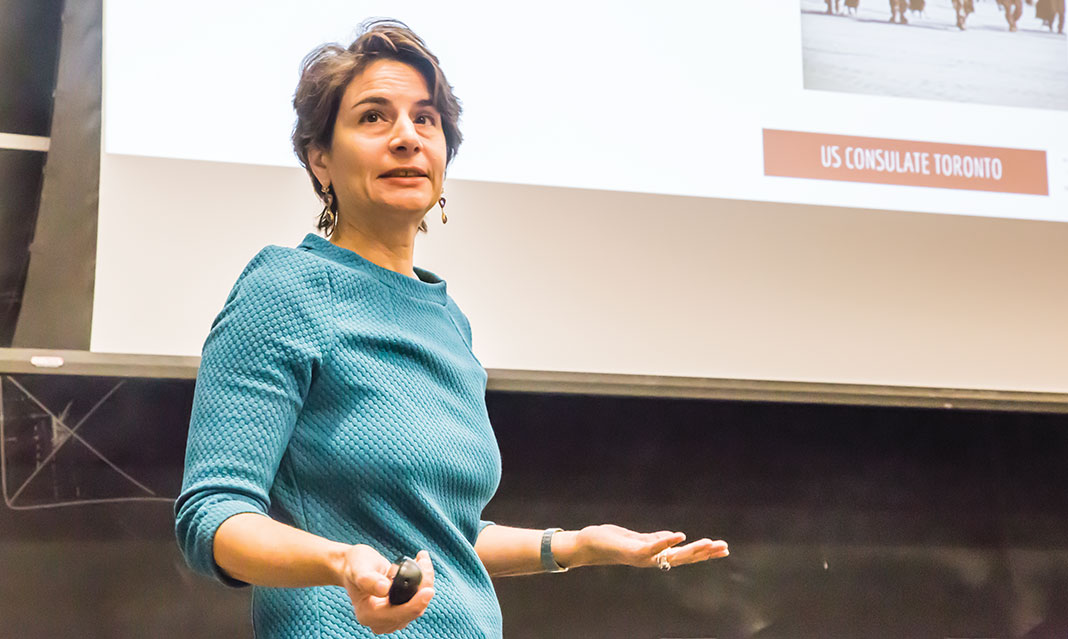Last Friday, POL203: Politics and Government of the United States, a course offered at UTM that focuses on the politics of the U.S. and, to a larger extent, North America, welcomed U.S. Consular Section Chief Sonya Tsiros to their lecture for a discussion on Canada and U.S. relations. As the U.S. Consular Section Chief, Tsiros acts as a governmental representative for the U.S. across consulates situated worldwide.
Her current posting, taking place in Ontario, has brought her to UTM to discuss the relations between the U.S. and Canada and what they encompass in detail. The presentation also included a brief overview of the history between the long-standing allies.
The alliance between the two countries is an enduring mutualistic relationship defined by more than their geographical adjacency. With an embassy and over eight consulates stationed within Canada alone, the U.S. government has made great pains to establish a pleasant relationship with both the government and the residents of Canada.
Tsiros touched upon just a few of the notable figures that work in liaison between the U.S. and Canada, such as Kelly Craft, the U.S. Ambassador to Canada, and Greg Stanford, the Consul General. Although their roles differ in concept, both Craft and Stanford work towards similar goals: to facilitate discussion and distribution of information between a wide range of demographics across the country. Tsiros notes that Craft’s duties include “meeting with government officials […] lots of students, business groups.”
Another aspect that connects U.S. and Canada is their trade industries. As the “world’s largest and most comprehensive trading relationship,” according to Tsiros, it is evident in the statistics that the two are heavily dependent on each other for both imports and exports—Canada proves to be the top consumer of goods for 36 out of 50 states.
In contrast to the typical nature of supply and demand, the military support that these two countries provide each other is not as obvious to their citizens. Alliances such as NATO (The North Atlantic Treaty Organization) have bound the U.S. to Canada in an intergovernmental fashion that also includes 27 other countries across North America and Europe. “We [the U.S.] have really relied upon Canada […] and so that is also a large part of our relationship,” states Tsiros.
The environment and its deterioration in the wake of human activity has become an increasingly large concern on a global scale. In particular, between the border of the U.S. and Canada lie the Great Lakes, freshwater reserves of large proportions. The two countries have cooperated in order to solve the environmental issues that surround these invaluable resources.
As the U.S. Consular Section Chief concluded her presentation, she opened the floor for the attending POL203 students to ask questions. Although the questions varied widely in scope, the larger picture of politics, both within America and overseas, was encompassed in every question and inquiry. Ultimately, seeing as an overwhelming majority of Canada’s population lives within 100 miles of the border, it is beneficial to learn about the longstanding relationship between Canada and the U.S. and how that relationship impacts us as citizens.



